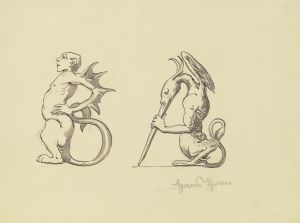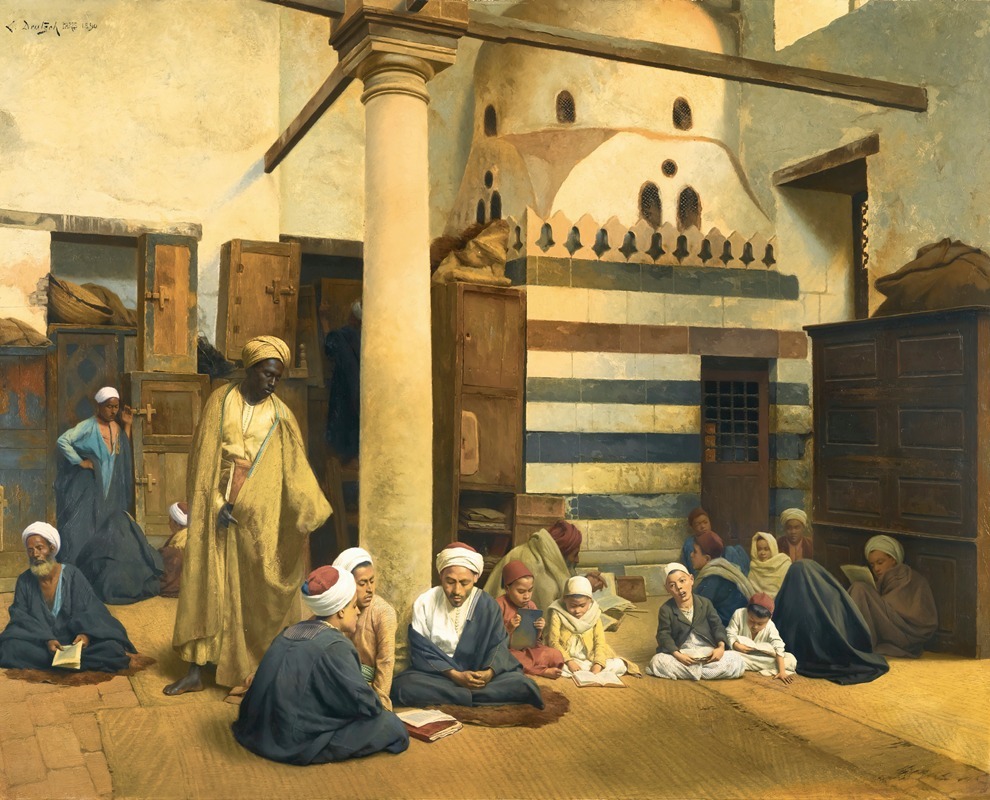
In the Madrasa
A hand-painted replica of Ludwig Deutsch’s masterpiece In the Madrasa, meticulously crafted by professional artists to capture the true essence of the original. Each piece is created with museum-quality canvas and rare mineral pigments, carefully painted by experienced artists with delicate brushstrokes and rich, layered colors to perfectly recreate the texture of the original artwork. Unlike machine-printed reproductions, this hand-painted version brings the painting to life, infused with the artist’s emotions and skill in every stroke. Whether for personal collection or home decoration, it instantly elevates the artistic atmosphere of any space.
Ludwig Deutsch was an Austrian painter known for his Orientalist works, capturing scenes from the Middle East and North Africa with meticulous detail and vibrant color. One of his notable paintings is "In the Madrasa," which exemplifies his fascination with Islamic culture and architecture. Deutsch was part of a group of European artists in the late 19th and early 20th centuries who were captivated by the exoticism of the Orient, a term used at the time to describe the regions of the Middle East, North Africa, and parts of Asia.
"In the Madrasa" depicts a scene within a madrasa, an educational institution in the Islamic world that is often associated with religious and academic learning. The painting showcases Deutsch's attention to architectural detail and his ability to capture the intricate designs typical of Islamic art and architecture. The setting is likely inspired by his travels and studies, as Deutsch was known to have visited Egypt and other parts of the Middle East, where he gathered inspiration and materials for his work.
The painting features a group of men engaged in study or discussion, surrounded by the ornate architecture of the madrasa. The figures are dressed in traditional Middle Eastern attire, and the setting is characterized by the presence of geometric patterns, calligraphy, and decorative tiles, which are hallmarks of Islamic architectural design. Deutsch's use of light and shadow adds depth to the scene, highlighting the textures and colors of the materials depicted.
Deutsch's work is often praised for its technical precision and the way it captures the atmosphere of the scenes he portrays. However, like many Orientalist artists, his work has also been critiqued for its romanticized and sometimes stereotypical portrayal of Eastern cultures. Orientalism, as a movement, has been subject to criticism for its tendency to depict the East as exotic, mysterious, and fundamentally different from the West, often reinforcing colonial attitudes.
Despite these critiques, "In the Madrasa" remains an important example of Orientalist art, reflecting the interests and artistic trends of its time. Deutsch's ability to render the details of Islamic architecture and his focus on the scholarly aspect of the madrasa provide insight into the cultural exchanges and perceptions of the period.
Ludwig Deutsch's paintings, including "In the Madrasa," are held in various private collections and museums, where they continue to be studied and appreciated for their artistic merit and historical context. His work offers a window into the past, illustrating the fascination and complexities of cross-cultural interactions during the height of the Orientalist movement.





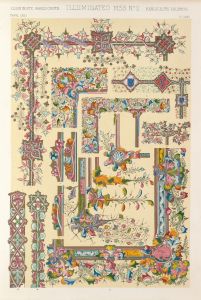
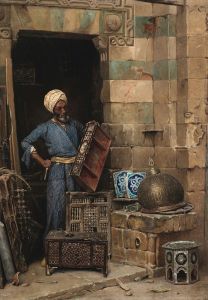
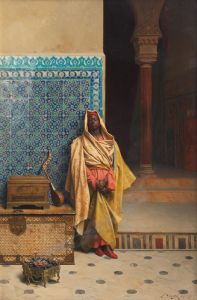


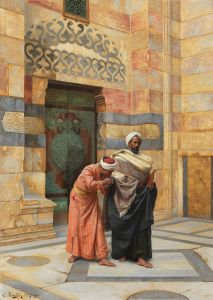
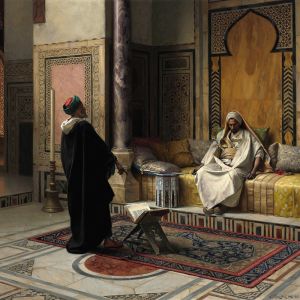
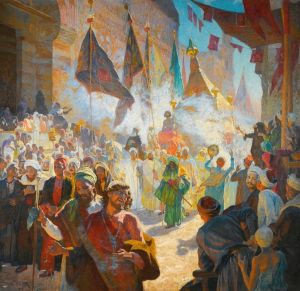
![Interior of the mosque of the Metwalys [Metwalis].](/imgs/217497/s/david-roberts-interior-of-the-mosque-of-the-metwalys-metwalis-d41ed7bd.jpg)
